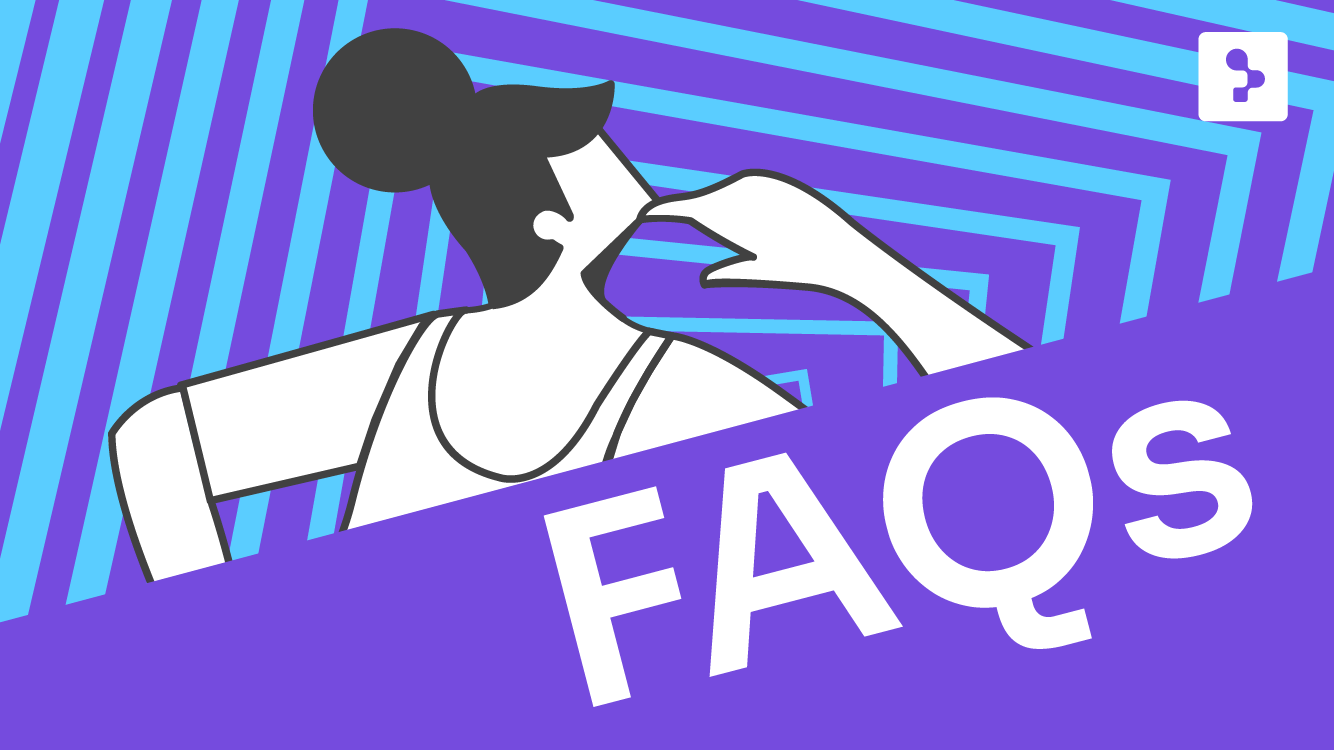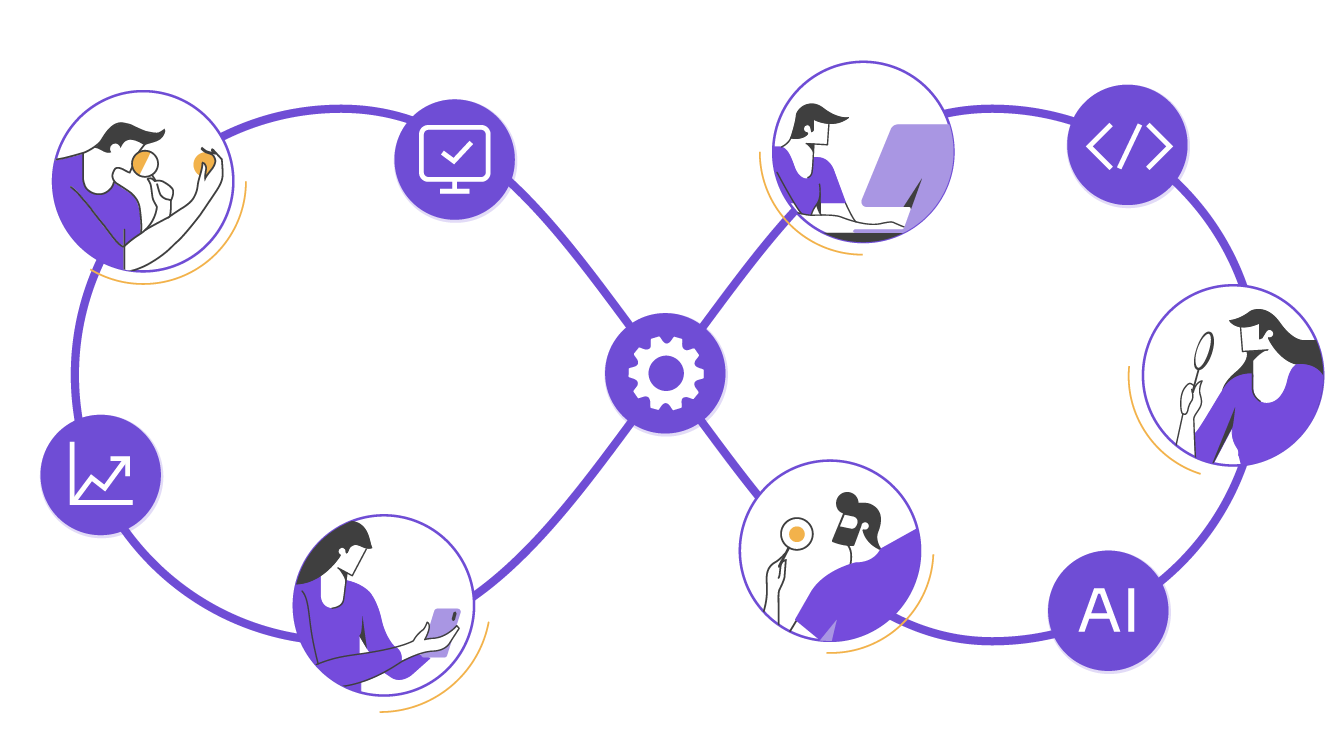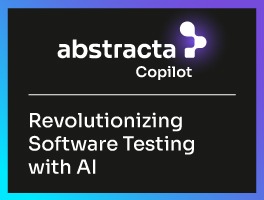Building on-chain? Automated testing for blockchain reveals what manual testing often misses: failures in motion, pressure points, and cracks that users shouldn’t be the ones to find.


Can You Trust a System That No One Controls? When it comes to blockchain, trust is decentralized. But ironically, trust must be earned and tested.
Distributed systems like blockchain challenge almost every convention of traditional software testing. Smart contracts lock logic into immutable ledgers. Data is broadcast across peers, not stored in centralized databases. A single flaw might not just break functionality, it could cost millions.
Yet despite blockchain’s reputation for being tamper-proof, many blockchain applications remain vulnerable due to insufficient testing strategies. In this landscape, automated testing for blockchain becomes an efficiency booster and a necessity.
As decentralized applications grow in complexity and value, blockchain testing is essential to uncover risks and validate smart contract behavior. Automation helps scale that effort and build trust in systems where failures can’t be reversed.
Let’s explore what makes blockchain testing so complex, why automation matters, and how to design a testing strategy that builds real confidence into your blockchain solution.
Flaky tests? Slow feedback? Endless maintenance?
If your current setup feels like it’s holding you back, dive into our test automation services.
Book a meeting!
Why Automated Testing for Blockchain Is Gaining Ground


In blockchain development, testing holds more weight than in many other domains. Here, a silent failure can ripple across networks, lock users out of assets, or leave vulnerabilities exposed in public view. That’s why automation isn’t a luxury or a time-saver but a part of how we stay present in every corner of the system, no matter how distributed.
Automation gives us the ability to observe, replicate unpredictable loads, and replay critical behaviors. It makes patterns visible where chaos could hide, and turns assumptions into measurable realities.
What Automation Unlocks in Blockchain Testing
Done well, automated testing opens up space for deeper understanding, pushing the system with intention:
- Exploring how test cases unfold under peak traffic
- Watching node synchronization under poor network conditions
- Comparing outcomes across versions, forks, or configuration changes
These insights aren’t surface-level; they influence architecture, protocol choices, and user-facing reliability.
Scripts Alone Don’t Build Confidence
Without direction, scripts only repeat what we already know. Real value emerges when automation is designed to expose what we don’t. This calls for a grounded testing strategy, one that prioritizes the right layers, sequences validations thoughtfully, and adapts to the evolving nature of decentralized systems.
At Abstracta, we build testing ecosystems that can help you reflect the logic of blockchain itself: distributed, consistent, and purpose-driven. Whether it’s testing gas consumption patterns or simulating real-world usage across nodes, our approach helps uncover issues early and guide informed decisions.
Before going deeper into the structural demands of blockchain testing, it helps to pause and recognize what actual testing and automation enable when applied with care, and the differences between traditional software and blockchain applications.
What’s Different About Testing Blockchain Applications?
| Aspect | Traditional Software | Blockchain Applications |
| Architecture | Centralized | Decentralized |
| Data Storage | Mutable | Immutable |
| Testing Scope | Controlled | Distributed across nodes |
| Failure Impact | Isolated | Potentially global |
| Key Focus | UX, logic | Security, consensus, smart contracts |
Key Benefits Of Automated Blockchain Testing
- Scalability: Run broad, complex test scenarios across environments and roles without multiplying manual work.
- Repeatability: Reuse critical test cases in regression testing and across frequent changes, maintaining consistency over time.
- Speed: Reduce time to feedback for each update, especially when iterating on smart contract execution or protocol changes.
- Resilience: Reveal system fragility early through layered, continuous validation in different test environments. Builds confidence in the blockchain ecosystem.
- Regulatory Readiness: Support regulatory compliance testing and auditability by automating validation of requirements across releases.
Of course, these benefits don’t replace the need for deep thinking. Instead, they create space for it, and automation helps make complexity observable.
What Makes Blockchain Testing So Demanding?


Testing in blockchain systems forces us to make choices differently. There’s no central control, no silent patch, no undo button. Once a change is made, it’s part of the record: not just in code, but in value, in relationships, and in outcomes that can’t be quietly revised.
This shifts how we think about quality. It’s woven into every design decision, every dependency, and every assumption.
What You’re Working With
- Smart contract logic that stays in place: Once deployed, a smart contract becomes part of the network. That permanence means tests need to go far beyond functionality. They need to reveal how that logic will behave under pressure, across time, and under the influence of unexpected events.
- Distributed data that must agree across contexts: In a blockchain network, a single transaction touches multiple nodes. Testing isn’t just about “did it work,” but “does it align”—between participants, across versions, and through evolving states.
- Permission and access that vary by chain and user: Public and private chains don’t follow the same logic. A test that passes in one setting might be meaningless in another. Your test environment has to reflect those subtleties, or you’re looking at a filtered version of risk.
- A continuous negotiation with external systems: APIs, oracles, event-based triggers. Many systems depend on data they don’t control. The question becomes not just “does it respond?” but “what happens when it doesn’t?” Testing that connection is part of understanding the full behavior of your system.
Questions That Come Up Along the Way
How can I know if a contract will hold up in production?
You start by trying to break it, not to prove its strength, but to learn where it gives way. Unit testing has a place. But so do layered explorations: security testing, behavioral fuzzing, property-based testing, and structured analysis.
Are testnets enough?
They’re part of the toolkit, yes. But they’re a model. They don’t mirror real usage, real money, or the real pressures that come from unpredictability at scale. Use them to validate flows, but don’t rely on them to reveal everything.
What happens if something breaks after launch?
Then the margin of preparation shows. If upgrade paths were tested, if critical scenarios were rehearsed, and if monitoring is in place, there’s room to respond. At Abstracta, we help teams define those margins early and test for them like they matter.
How We Work on This at Abstracta
We look at what you’re building, why it matters, and where it could shift.
- We design around the actual roles and relationships in your system
- We replicate usage, friction, and ambiguity—not just input/output
- We build visibility into how distributed systems behave under change
Testing helps us see. Not to prove perfection, but to understand what the system really is, how it holds up, and where it needs more care. From there, we can move into the specific types of testing that allow that understanding to grow.
Have you ever launched something that looked solid, but users still dropped off?
Dive into our Observability services! We empower you to build with clarity and act with purpose.
Book a meeting. Let’s make your data work for you!
The Layers Where Automated Blockchain Testing Adds Value


Automation doesn’t apply equally across all layers of blockchain testing. Some require repeatable scripted validation, others benefit from simulation, and a few rely on context that automation alone can’t capture. Understanding how each layer interacts with automation helps prioritize effort and uncover the system’s real behavior under diverse conditions.
Types of Blockchain Testing You Should Know
To build reliable systems in blockchain, we recommend testing across layers that respond to very different questions. Each type of blockchain testing plays a role in uncovering where the system might fail, what needs to be protected, and how the application behaves under uncertain or adversarial conditions. Apart from categories, they reflect different forms of thinking, each targeting a specific dimension of risk, behavior, or failure.
Functional Logic Testing
Functional testing helps validate the expected behavior of smart contracts and application logic. This includes checking conditionals, input/output validation, and function execution paths, both under standard use and edge cases. It plays a key role in confirming that rules are enforced consistently and that unintended paths remain inaccessible.
Security Testing
Security validation focuses on uncovering security vulnerabilities and weak points. It includes fuzzing, access control checks, logic abuse simulations, and analysis of third-party dependencies. This is especially relevant when testing smart contracts with financial or governance implications, where data security must be preserved throughout the entire transaction lifecycle.
Penetration Testing
Penetration testing simulates adversarial behavior to evaluate how a blockchain application holds up against intentional attacks. This includes automated injection of malicious inputs, stress tests on authentication layers, and attempts to exploit known vulnerabilities in smart contracts and network nodes. By integrating it into CI/CD pipelines, you can identify critical exposures early, before attackers do.
Performance Testing and Scalability
Performance tests assess how the system behaves under increasing load or constrained resources. They evaluate response time, throughput, block propagation delays, and node synchronization. Scalability is measured through simulated peaks, concurrency, and long-running transaction patterns.
API Testing and Integration Testing
Verifies the correct interaction between the blockchain layer and external systems. Integration testing often targets oracles, identity providers, external APIs, and off-chain services. It checks data consistency, error handling, and timeout behaviors across distributed boundaries.
Regression Coverage
Automated regression testing validates that updates or bug fixes don’t introduce new problems. Teams re-execute previously validated tests to execute test cases and compare outcomes across builds. In blockchain, even minor contract changes can affect how the state is managed or how events are emitted.
These types aren’t isolated. Each one deepens the context for the next, creating a more resilient view of how the system behaves and how it holds up in the real world.
Additional Layers of Automated Blockchain Testing
Cross-Chain and Interoperability Testing
Confirms that multiple blockchain systems can exchange data, respect protocols, and recover gracefully from inconsistencies. This testing is key in ecosystems involving bridges, wrapped tokens, or multichain governance workflows.
Compliance and Audit-Readiness
Evaluates how the system aligns with regulatory requirements and operational policies. Compliance testing often involves validating transaction logs, fostering reproducibility, and simulating security audits where traceability is essential.
Upgrade Path Validation
Tests how contracts or protocols transition from one version to another. Upgrade testing includes simulating partial rollouts, node version mismatches, and migration of persistent state without data loss or consensus issues.
Event and State Simulation
Focuses on how the system reacts to sequences of events, complex state transitions, or asynchronous behavior. This type of testing is essential in workflows involving timeouts, chain reactions, or automated smart contract execution.
Fault Tolerance and Recovery Testing
This form of testing examines how the system reacts when components become unavailable, nodes drop out, or transactions fail midway. It’s especially relevant in automated environments where human intervention is minimal, and recovery must be triggered by protocol logic.
Test Data Management
Automated testing relies heavily on realistic, reusable, and isolated datasets. This layer focuses on how test data is created, injected, and cleaned within blockchain environments, particularly when dealing with immutable storage or limited state reset options.
Test Execution Orchestration
Automating across multiple blockchain layers often requires distributed coordination. This involves structuring how and when tests are triggered, what environments are provisioned, and how results are consolidated in systems where state is fragmented or evolving.
Each type of testing reveals something others can’t. When they work together, they build a clearer view of how your blockchain system functions, adapts, and holds up under uncertainty.
Best Practices For Automated Blockchain Testing


Automated testing in blockchain environments demands more than scripts and schedules. Its value comes from the way it supports thinking, adapts to change, and reveals behavior over time. Good practices help translate automation into useful insight, especially in decentralized systems that evolve constantly.
- Use test automation for repeatable validation: Run consistent test execution cycles across different network states, contract versions, and environments. This allows for early detection of change impact without increasing manual overhead.
- Design realistic test data and simulate multiple concurrent users: Strong test data reflects the complexity of how users interact with blockchain applications. Simulating load and concurrency helps testing identify bottlenecks in system performance and surface issues, particularly around throughput and transaction queuing.
- Monitor test execution across environments: Visibility matters when test results vary depending on where and when they’re run. Tracking across multiple layers helps identify instability and reduce guesswork.
- Maintain a modular testing framework: A flexible testing framework enables layered testing strategies. With modular components for unit testing, integration testing, and regression testing, teams can expand coverage without rework.
- Automate within CI/CD pipelines: Continuous validation strengthens confidence. Integrating core test types into your delivery pipeline builds a rhythm of observation, surfacing issues before they affect users.
- Track test coverage and refine continuously: Coverage metrics should lead to better questions, not just higher numbers. Map test coverage to risk, complexity, and contract exposure to uncover what still needs to be observed.
These practices don’t guarantee outcomes, but they help turn automation into something useful, something that can guide decisions, uncover fragility, and give blockchain systems room to grow with clarity.
Real Impact: A Case from Abstracta
At Abstracta, we partnered with a blockchain fintech firm developing a cross-border payment platform. One of their biggest hurdles? Boosting smart contracts executed correctly across multiple currencies and jurisdictions.
By applying automated smart contract testing alongside rigorous testing, we uncovered several logic flaws and bottlenecks that manual tests had missed. Our comprehensive testing suite allowed the team to catch issues early and confidently scale.
As a result, they launched with far fewer post-deployment incidents and increased trust among users.
Conclusion: The Real Value of Automation in Blockchain Testing
In decentralized systems, quality can’t be an afterthought. It must be embedded into every block, contract, and interaction. Automated testing for blockchain helps bring clarity to complexity, allowing you to build with speed, trust, and resilience. The process may look different from traditional software testing, but the goals remain the same: reliability, security, and value.
As blockchain technology continues to expand into industries like finance, supply chain, and healthcare, its reliability becomes even more critical. Testing strategies must evolve to address the unique risks and behaviors that emerge in decentralized networks.
Blockchain is transforming how the world transacts. Testing is how we validate that transformation.
FAQs about Automated Testing for Blockchain


How to Test a Blockchain?
Start with setting up a local test environment, define your test cases, and cover smart contracts, network behavior, and integration with external systems. Use automation where possible.
Can Blockchain Be Automated?
Yes, while the blockchain itself is decentralized, the testing process can be highly automated to validate smart contracts, APIs, and network performance.
What Is QA in Blockchain?
Quality assurance in blockchain focuses on thorough testing of smart contracts, validating data integrity, and verifying whether the system behaves reliably under real-world conditions.
Can Blockchain Be Used in Software Testing?
Blockchain can support software testing for logging, data transparency, and test data traceability, especially in compliance-heavy industries like supply chain management.
How We Can Help You


With over 16 years of experience and a global presence, Abstracta is a leading technology solutions company with offices in the United States, Chile, Colombia, and Uruguay. We specialize in software development, AI-driven innovations & copilots, and end-to-end software testing services.
Our expertise spans across industries. We believe that actively bonding ties propels us further. That’s why we’ve forged robust partnerships with industry leaders like Microsoft, Datadog, Tricentis, Perforce BlazeMeter, and Saucelabs, empowering us to incorporate cutting-edge technologies.
We bring decades of expertise in testing complex systems. Our holistic approach enables us to support you across the entire software development life cycle.
Visit our Test Automation Webpage to learn more about our testing services!
Contact us to grow your business!


Follow us on LinkedIn & X to be part of our community!
Recommended for You
What Is QA Testing? Differences with QE and Evolution
Co-Development Software: A Step-by-Step Guide to Smarter Outcomes
Anti-Money Laundering in Canada: From Risk to Readiness
Tags In


Abstracta Team
Related Posts
How To Plan Test Case Automation with Development
A strategy to implement automated checks without losing sight of manual testing The goal of this post is to show a possible way you can plan test case automation with development in order to automate tests (have automatic checks) as soon as possible, without losing…
How to Quickly Set Up Test Automation in CI/CD
Here’s a mechanism to shorten the setup time for automated tests using Selenium inside a Jenkins pipeline Something you often hear about Continuous Integration (CI) is that it helps identify problems earlier, but does it really? CI is a practice whereby a team of developers integrates…
Search
Contents
Categories
- Acceptance testing
- Accessibility Testing
- AI
- API Testing
- Development
- DevOps
- Fintech
- Functional Software Testing
- Healthtech
- Mobile Testing
- Observability Testing
- Partners
- Performance Testing
- Press
- Quallity Engineering
- Security Testing
- Software Quality
- Software Testing
- Test Automation
- Testing Strategy
- Testing Tools
- Work Culture





